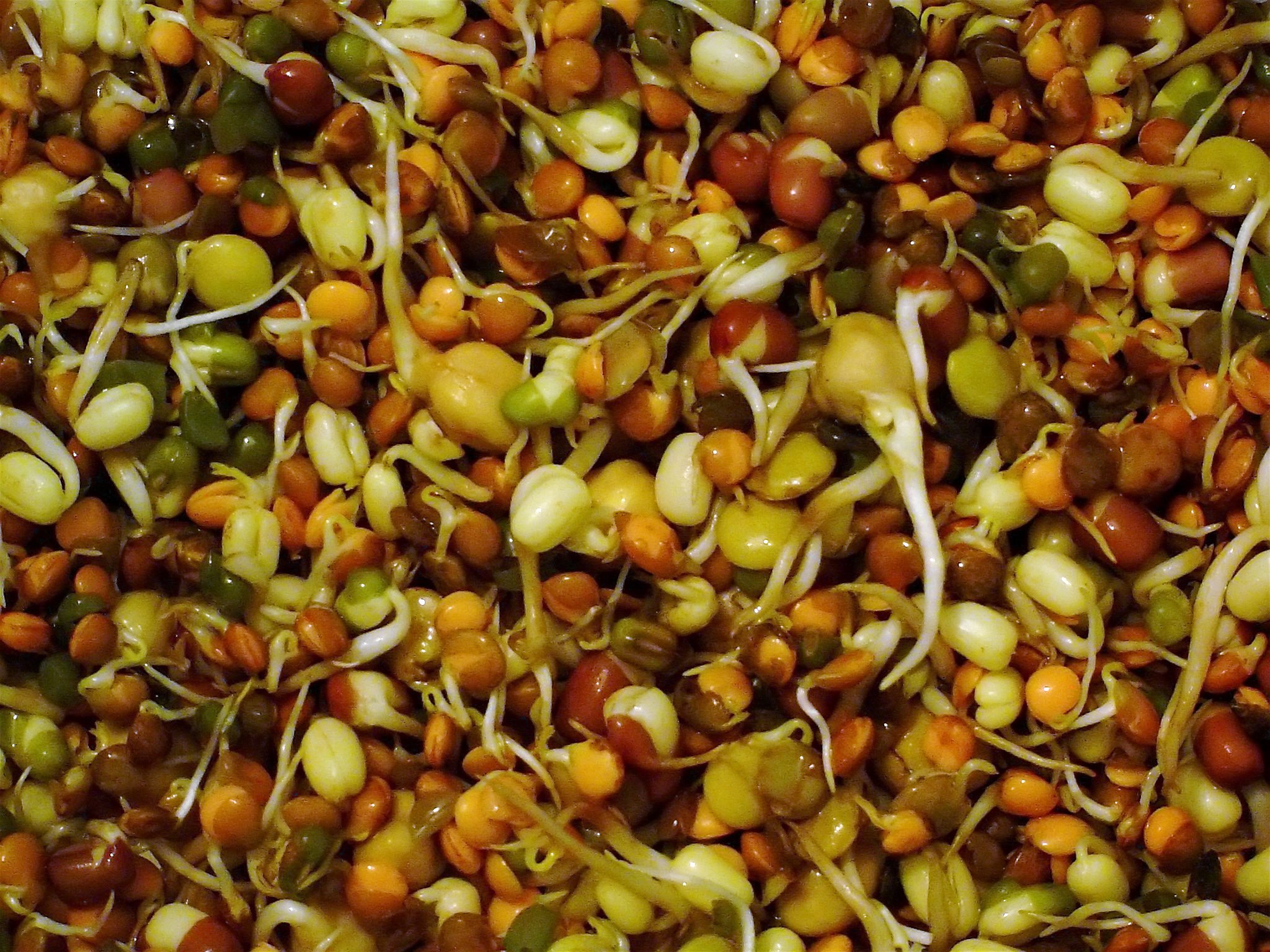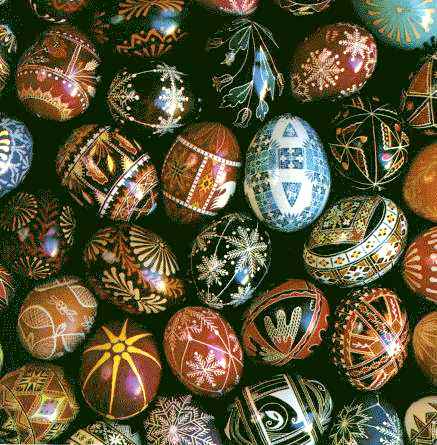|
Haft-Sin
Haftsin ( fa, هفتسین) is an arrangement of seven symbolic items whose names start with the letter "س" (pronounced as "seen"), the 15th letter in the Persian alphabet; "haft" (هفت) is Persian for "seven". It is traditionally displayed at Nowruz, the Iranian New Year, which is celebrated on the day of the vernal equinox, marking the beginning of spring in the Northern Hemisphere. Items of Haft-seen The following are the primary items of Haft-sin, whose Persian names begin with the letter ''sin'' in the Persian alphabet. # () – wheat, barley, mung bean, or lentil sprouts grown in a dish. # () – wheat germ sweet pudding. # () – Oleaster # () – vinegar. # () – apple. # () – garlic. Coins (سکه ''sekke''), hyacinth (سنبل ''sombol''), and clock (ساعت ''suat'' also pronounced so-at) are sometimes included too. Other symbolic items that are typically used to accompany Haft-sin include a mirror, candles, painted eggs, goldfish, and traditional ... [...More Info...] [...Related Items...] OR: [Wikipedia] [Google] [Baidu] |
Samanu
Samanu ( fa, سمنو / ''samanu''; az, səməni halvası), Samanak ( fa, سمنک / ''samanak''), Sümelek ( kk, сүмелек / tm, Sümelek / ''Syumelek''), Sumanak ( tg, суманак), Sumalak ( uz, sumalak ) or Sümölök ( ky, сүмөлөк ) is a sweet paste made from germinated wheat (young wheatgrass) and wheat flour, which is prepared especially for Nowruz (beginning of spring) in a large pot (like a kazan). This practice has been traced back to the pre-Islamic Sasanian Persian Empire. Although Samanu is prominent for "Haft-Sin" (the seven symbolic items traditionally displayed at Nowruz), the preparation "mela" (referring to a picnic) and eating it is traditional in Afghanistan. The wheat is soaked and prepared for days and so the entire process takes up to a week. Traditionally, the final cooking would take from evening until the daylight and was a party involving only women. This would be full of laughter and music and singing related songs. In Afghanistan ... [...More Info...] [...Related Items...] OR: [Wikipedia] [Google] [Baidu] |
Oleaster
{{Plant common name ...
, signifying a plant like an olive, but less valuable (cf. poetaster), may be applied to: *Feral olive trees that have been allowed to run wild *'' Olea oleaster'', the wild olive *Various species of ''Elaeagnus'', notably ''Elaeagnus angustifolia'', the Russian olive, the dried fruits of which are eaten during Nowruz Nowruz ( fa, نوروز, ; ), zh, 诺鲁孜节, ug, نەۋروز, ka, ნოვრუზ, ku, Newroz, he, נורוז, kk, Наурыз, ky, Нооруз, mn, Наурыз, ur, نوروز, tg, Наврӯз, tr, Nevruz, tk, Nowruz, ... [...More Info...] [...Related Items...] OR: [Wikipedia] [Google] [Baidu] |
Elaeagnus Angustifolia
''Elaeagnus angustifolia'', commonly called Russian olive, silver berry, oleaster, or wild olive, is a species of ''Elaeagnus'', native to western and central Asia, Iran, from southern Russia and Kazakhstan to Turkey, parts of Pakistan and parts of India. , it is widely established in North America as an introduced species. Description ''Elaeagnus angustifolia'' is a usually thorny shrub or small tree growing to in height. Its stems, buds, and leaves have a dense covering of silvery to rusty scales. The leaves are alternate, lanceolate, long and broad, with a smooth margin. The plants begin to flower and fruit from 3 years old. The highly aromatic flowers, produced in clusters of one to three, are 1 cm long with a four-lobed creamy yellow calyx; they appear in early summer and are followed by clusters of fruit, a small cherry-like drupe long, orange-red covered in silvery scales. The fruits are about 1 cm wide and sweet, though with a dryish, mealy texture. The spec ... [...More Info...] [...Related Items...] OR: [Wikipedia] [Google] [Baidu] |
Sprouting
Sprouting is the natural process by which seeds or spores germinate and put out shoots, and already established plants produce new leaves or buds, or other structures experience further growth. In the field of nutrition, the term signifies the practice of germinating seeds (for example, mung beans or sunflower seeds) to be eaten raw or cooked, which is considered more nutritious. Suitable seeds All viable seeds can be sprouted, but some sprouts, such as kidney beans, should not be eaten raw. Bean sprouts are a common ingredient across the world. They are particularly common in Eastern Asian cuisine. It typically takes one week for them to become fully grown. The sprouted beans are more nutritious than the original beans, and they require much less cooking time. There are two common types of bean sprouts: * Mung bean sprouts, made from greenish-capped mung beans * Soybean sprouts, made from yellow, large-grained soybeans Common sprouts used as food include: * Pulse ... [...More Info...] [...Related Items...] OR: [Wikipedia] [Google] [Baidu] |
The Divān Of Hafez
''The Divān'' of Hafez ( Persian: دیوان حافظ) is a collection of poems written by the Iranian poet Hafez. Most of these poems are in Persian, but there are some macaronic language poems (in Persian and Arabic) and a completely Arabic ghazal. The most important part of this ''Divān'' is the ghazals. Poems in other forms such as qetʿe, qasida, mathnawi and rubaʿi are as well included in the ''Divān''. There is no evidence that Hafez's lost poems might have constituted the majority of his poetic output, and in addition, Hafez was very famous during his lifetime. Therefore he cannot have been a prolific poet. The number of ghazals that are generally accepted is less than 500: 495 ghazals in Ghazvini and Ghani edition, 486 ghazals in Natel-Khanlari's second edition and 484 ghazals in the Sayeh edition. Overview ''The Divān'' of Hafez was probably compiled for the first time after his death by Mohammad Golandam. However, some unconfirmed reports indicate that Hafez p ... [...More Info...] [...Related Items...] OR: [Wikipedia] [Google] [Baidu] |
Shahnameh
The ''Shahnameh'' or ''Shahnama'' ( fa, شاهنامه, Šāhnāme, lit=The Book of Kings, ) is a long epic poem written by the Persian poet Ferdowsi between c. 977 and 1010 CE and is the national epic of Greater Iran. Consisting of some 50,000 "distichs" or couplets (two-line verses), the ''Shahnameh'' is one of the world's longest epic poems. It tells mainly the mythical and to some extent the historical past of the Persian Empire from the creation of the world until the Muslim conquest in the seventh century. Iran, Azerbaijan, Afghanistan, Tajikistan and the greater region influenced by Persian culture such as Armenia, Dagestan, Georgia, Turkey, Turkmenistan and Uzbekistan celebrate this national epic. The work is of central importance in Persian culture and Persian language, regarded as a literary masterpiece, and definitive of the ethno-national cultural identity of Iran. It is also important to the contemporary adherents of Zoroastrianism, in that it traces th ... [...More Info...] [...Related Items...] OR: [Wikipedia] [Google] [Baidu] |
Avesta
The Avesta () is the primary collection of religious texts of Zoroastrianism, composed in the Avestan language. The Avesta texts fall into several different categories, arranged either by dialect, or by usage. The principal text in the liturgical group is the ''Yasna'', which takes its name from the Yasna ceremony, Zoroastrianism's primary act of worship, and at which the ''Yasna'' text is recited. The most important portion of the ''Yasna'' texts are the five Gathas, consisting of seventeen hymns attributed to Zoroaster himself. These hymns, together with five other short Old Avestan texts that are also part of the ''Yasna'', are in the Old (or 'Gathic') Avestan language. The remainder of the ''Yasna'''s texts are in Younger Avestan, which is not only from a later stage of the language, but also from a different geographic region. Extensions to the Yasna ceremony include the texts of the '' Vendidad'' and the '' Visperad''. The ''Visperad'' extensions consist mainly of add ... [...More Info...] [...Related Items...] OR: [Wikipedia] [Google] [Baidu] |
Goldfish
The goldfish (''Carassius auratus'') is a freshwater fish in the family Cyprinidae of order Cypriniformes. It is commonly kept as a pet in indoor aquariums, and is one of the most popular aquarium fish. Goldfish released into the wild have become an invasive pest in parts of North America. Native to East Asia, the goldfish is a relatively small member of the carp family (which also includes the Prussian carp and the crucian carp). It was first selectively bred for color in imperial China more than 1,000 years ago, and several distinct breeds have since been developed. Goldfish breeds vary greatly in size, body shape, fin configuration, and coloration (various combinations of white, yellow, orange, red, brown, and black are known). History Various species of carp (collectively known as Asian carp) have been bred and reared as food fish for thousands of years in East Asia. Some of these normally gray or silver species have a tendency to produce red, orange or yellow co ... [...More Info...] [...Related Items...] OR: [Wikipedia] [Google] [Baidu] |
Egg Decorating
Egg decorating is the art or craft of decorating eggs. It has been a popular art form throughout history because of the attractive, smooth, oval shape of the egg, and the ancient associations with eggs as a religious and cultural symbol. Egg decorating has been associated with Easter in recent times, but was practiced independently by many ancient cultures. History Eggs are an important symbol in folklore and mythology, often representing life and rebirth, healing and protection, and sometimes featuring in creation myths. This means that traditional egg decorating existed throughout the world. Africa The oldest eggshells, decorated with engraved hatched patterns, are dated for 60,000 years ago and were found at Diepkloof Rock Shelter in South Africa.Texier PJ, Porraz G, Parkington J, Rigaud JP, Poggenpoel C, Miller C, Tribolo C, Cartwright C, Coudenneau A, Klein R, Steele T, Verna C. (2010). "A Howiesons Poort tradition of engraving ostrich eggshell containers dated to 60,0 ... [...More Info...] [...Related Items...] OR: [Wikipedia] [Google] [Baidu] |
Sumac
Sumac ( or ), also spelled sumach, is any of about 35 species of flowering plants in the genus ''Rhus'' and related genera in the cashew family (Anacardiaceae). Sumacs grow in subtropical and temperate regions throughout the world, including East Asia, Africa, and North America. Sumac is used as a spice, as a dye, and in medicine. Description Sumacs are dioecious shrubs and small trees in the family Anacardiaceae that can reach a height of . The leaves are usually pinnately compound, though some species have trifoliate or simple leaves. The flowers are in dense panicles or spikes long, each flower very small, greenish, creamy white or red, with five petals. The fruits are reddish, thin-fleshed drupes covered in varying levels of hairs at maturity and form dense clusters at branch tips, sometimes called sumac bobs. Sumacs propagate both by seed ( spread by birds and other animals through their droppings), and by new shoots from rhizomes, forming large clonal colonies. Taxono ... [...More Info...] [...Related Items...] OR: [Wikipedia] [Google] [Baidu] |
Hyacinthus Orientalis0
''Hyacinthus'' is a small genus of bulbous, spring-blooming perennials. They are fragrant flowering plants in the family Asparagaceae, subfamily Scilloideae and are commonly called hyacinths (). The genus is native to the area of the eastern Mediterranean from the south of Turkey to Palestine, although naturalized more widely. Several species of ''Brodiaea'', ''Scilla'', and other plants that were formerly classified in the Liliaceae family and have flower clusters borne along the stalk also have common names with the word "hyacinth" in them. Hyacinths should also not be confused with the genus '' Muscari'', which are commonly known as grape hyacinths. Description ''Hyacinthus'' grows from bulbs, each producing around four to six linear leaves and one to three spikes or racemes of flowers. In the wild species, the flowers are widely spaced, with as few as two per raceme in '' H. litwinovii'' and typically six to eight in '' H. orientalis'' which grows to a hei ... [...More Info...] [...Related Items...] OR: [Wikipedia] [Google] [Baidu] |





.jpg)

